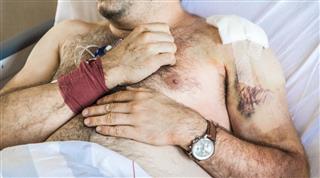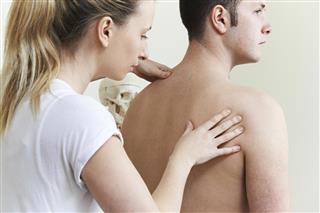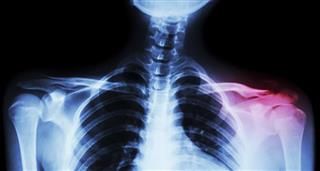
A labrum surgery involves the arthroscopic reattachment of the labram cartilage to the bones of the shoulder joint. Given below is the recovery time and the factors that influence it.
There are two types of cartilage that are present in the shoulder joint; the articular cartilage and the labrum. The labrum cartilage is more fibrous or rigid as compared to the articular cartilage present on the ends of the ball and socket joint. Furthermore, it is found to be attached only around the socket. This is a very important cartilage as it serves two functions – deepening of the socket so that the ball end of the other bone fits in its place, and to serve as an attachment for other structures or tissues around the joint. This cartilage can get torn in several places, like a small tear within the labrum cartilage, a tear where this cartilage meets the bicep’s tendon, or a complete tear where there is a subluxation of the shoulder joint. The treatment for a such tears, unless there is only minimal damage, generally involves surgical intervention. An arthroscopic surgery is generally advised to patients to deal with a torn labrum.
Surgery and the Recovery Time
The success rate associated with a labrum surgery is quite high and so, the only thing that worries most people is the recovery time. Although the recovery time depends on multiple factors, one can say that on an average, a full recovery after repair of a torn labrum usually takes about three to five months. However, as mentioned earlier, there are many different variables in this type of surgery that can contribute to speeding up the recovery time, like the amount of physical therapy the patient performs after surgery, the level of activity in his lifestyle, and whether he lets the shoulder fully recover before attempting to strain it again, or not.
Although the time after which a doctor may callback his patient could vary, doctors prefer to call their patients within the first week after the surgery. This is to check on the incision, so as to ensure that there isn’t any infection in the region. After this, the physical therapy starts, where the patient is advised to carry out a certain stipulated range of motion exercises. However, one needs to keep in mind that there are some restrictions that should be followed in order to allow the labrum to heal properly. This is important because straining the shoulder at this stage could hamper the healing process significantly, and thus, delay the recovery time.
The range of motion after surgery is greatly restricted. This is because, your arm will be placed in a sling for the first two weeks or a month after surgery, as it keeps the shoulder safe and prevents any unwanted stress on the labral repair. In the end, the amount of motion and strengthening of the arm allowed after surgery, depends upon many factors and it is up to the surgeon to let you know of your limitations. In most cases though, many physicians will restrict motion to either shoulder level or lower. Pain is a good guide in such cases, as the range of motion exercises should not be painful to perform.
Due to the variability in the labrum injury and the type of repair done, it is difficult to predict exactly how soon someone can to return to regular activities. However, if you diligently follow the doctors instructions, you should be able to use your arm and shoulder within a few months.
Disclaimer: This HealthHearty article is for informative purposes only, and should not be used as a replacement for expert medical advice.





